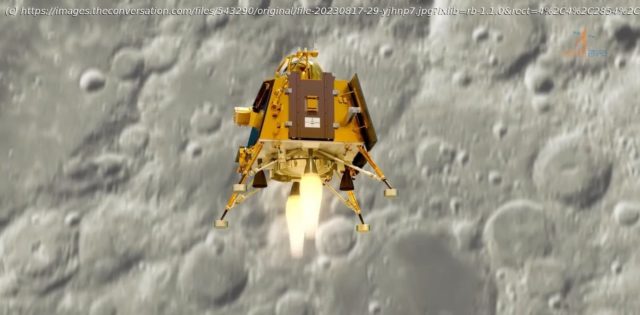The Indian spacecraft could lay the ground for future missions with astronauts, and even for lunar bases.
On Wednesday August 23, the Indian Space Research Organisation (ISRO) mission Chandrayaan-3 will deploy its lander and rover to the surface of the Moon.
As the name suggests, this is the third mission in a programme of Indian lunar exploration. Various problems affected the previous two Chandrayaan satellites, so officials at the Indian space agency will be hoping for a fully successful mission this time.
So what will Chandrayaan-3 do? We already have some nice images of the lunar surface taken by the lander module camera, which shows the successful separation from its propulsion module – the part that stays in lunar orbit. But the main task for the lander and rover is to show that the ISRO can successfully perform a gentle landing on the Moon.
The lander unit contains four main scientific instruments, including thermal and atmospheric instruments, and a laser retroreflector array. These reflectors are used to measure the distance to the Moon from the Earth to a high degree of accuracy.
Essentially, a high power laser is fired towards the Moon and the time taken for the light pulse to reach the Moon, and be reflected back to Earth, is measured. Knowing the speed of light, the time taken (roughly 2.5 seconds there and back) gives us a distance. The lander will also be able to measure moonquakes, weak seismic activity which occurs on a monthly basis.
The speed that the waves travel across the Moon can be used to work out its density and it is hoped that more accurate values for the depth of the lunar crust (its outermost layer) can be calculated.
The rover also contains scientific instrument packages. Its main focus is on identifying the composition of the lunar surface through x-ray spectrometry.Previous flights
The first mission in the programme, Chandrayaan-1, was launched in 2008. Both subsequent missions share a technological heritage with this original spacecraft.






